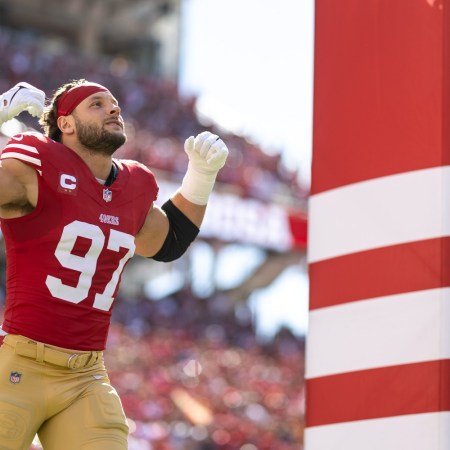On September 23, 2001, with 5:03 remaining in the fourth quarter of a Jets-Patriots game in Week 2, the Tom Brady era in New England began after Jets linebacker Mo Lewis slammed Drew Bledsoe along the right sideline at the old Foxboro Stadium.
On the morning of St. Patrick’s Day in 2020, that era officially came to a close, with the 42-year-old quarterback announcing on social media that he would be leaving the Patriots to continue his NFL career somewhere else.
While Brady’s announcement wasn’t entirely unexpected, it was still met with sadness and anger by Patriots fans in New England and beyond, many of whom can’t remember what it was like in the days before Brady took over for Bledsoe in 2001. Those reactions make sense: it will be a gut-punch to see Brady not wearing the Flying Elvis in Week 1 of the 2020 season, and instead rocking whatever horrendous uniform the Tampa Bay Buccaneers choose for that day.
But given the state of the quarterback position in today’s NFL, this move shouldn’t come as a shock.
Leading up to Brady’s announcement, there had only been 12 NFL quarterbacks who spent their entire career with one franchise (minimum 15 years played). Now that Brady is out in New England and Philip Rivers is headed to Indianapolis to play for the Colts, that figure will be down to 10 by the time next season rolls around.
Though there’s a romanticized notion of franchise quarterbacks staying with one team from their rookie year through their retirement, the reality is that it very rarely happens, especially for elite quarterbacks who compete for Super Bowls and command high salaries. Eli Manning and the Giants, John Elway and the Broncos, and Ben Roethlisberger and the Steelers (if, in fact, he finishes his career there) are the exceptions, not the rule.
Instead of seeing an elite QB like Brady remain with one team for the duration of his career, it’s much more common to see them pull a page out of the Joe Montana playbook and bolt for new pastures toward the end of their career when a desperate team is willing to pay whatever it takes (i.e., more than their current team will). Brett Favre did it (Falcons; Packers; Jets; Vikings). Kurt Warner did it (Rams; Giants; Cardinals). Peyton Manning did it (Colts; Broncos). And now, even Brady, a six-time Super Bowl winner with the Patriots, has done it.
Leaving a long-term relationship for a short-term fling with an up-and-comer is a classic mid-life crisis move, and it’s likely no coincidence that most of the above quarterbacks were approaching middle age when they sought out a new franchise. Whether the move to Tampa Bay will work out for Brady remains to be seen, but it’s easy to see why he made it.
Though he’s declined in the past few seasons, Brady still has the allure of being one of the NFL’s best quarterbacks, and can accordingly still get paid like one. Though it hasn’t been confirmed, Brady will reportedly be making somewhere in the range of $30 million annually, nearly $20 million more per year than he’s averaged over two decades with the Patriots, according to OverTheCap.
That wasn’t going to happen with Bill Belichick controlling the Patriots’ notoriously tight purse strings. Now, outside of New England’s control, Brady is cashing in for what seems like the first time in his illustrious career.
Thanks to his name recognition, Brady will also almost certainly provide the Bucs with a good return on their investment in the form of butts in seats, jerseys on backs and, hopefully, higher numbers in the win column.
Mix equal parts capitalism and ego, both of which are alive and well in today’s NFL, and this is what you get. For better or worse, the legend of the career-long franchise quarterback is effectively dead.
Whether you’re looking to get into shape, or just get out of a funk, The Charge has got you covered. Sign up for our new wellness newsletter today.


















